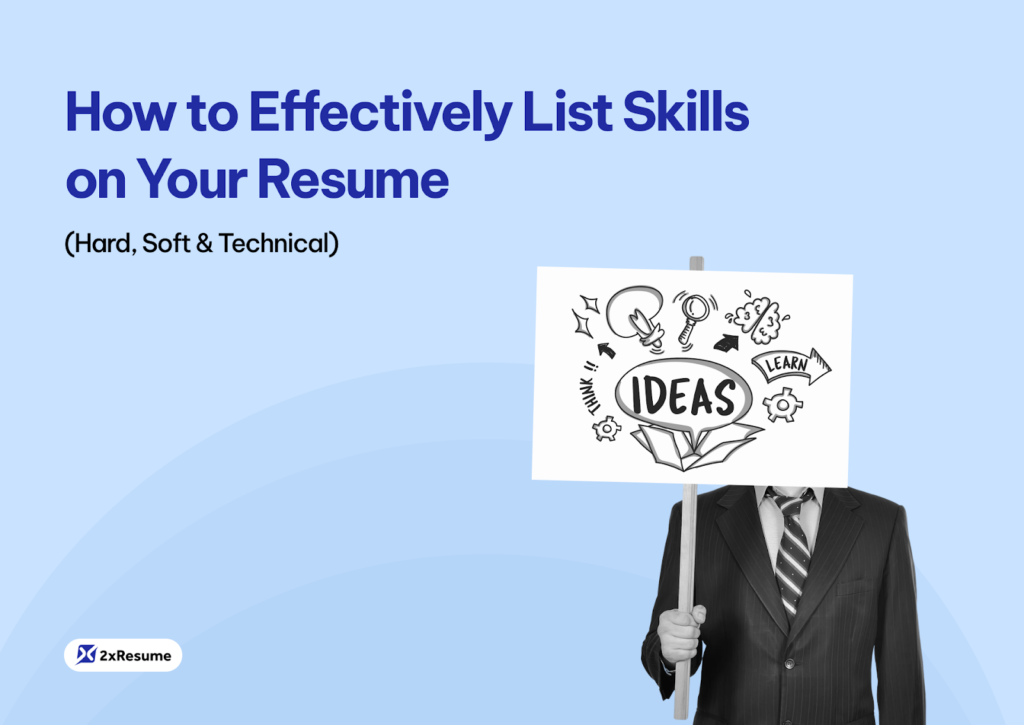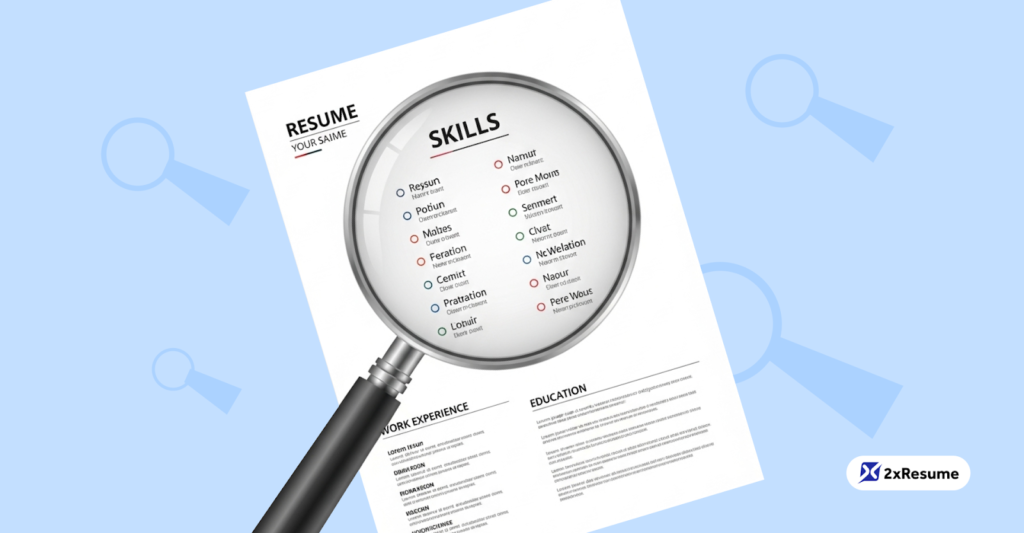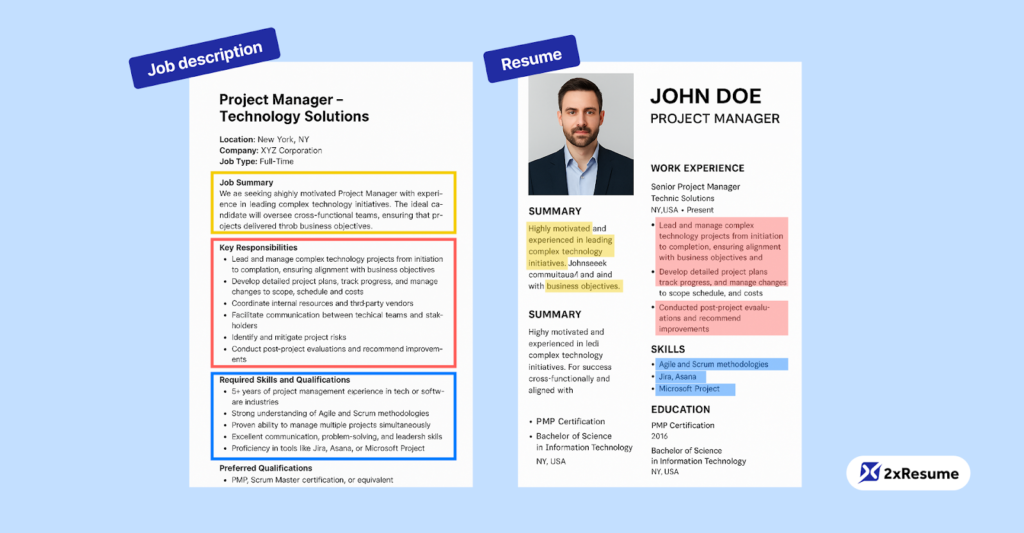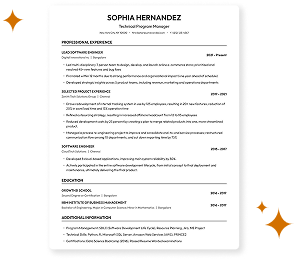Your resume is your personal marketing document, and in today’s competitive job market, every section counts. Among the most scrutinized parts? The skills section. This isn’t just a list of things you’re good at; it’s a strategic showcase of your capabilities, a quick snapshot for recruiters, and a critical checkpoint for Applicant Tracking Systems (ATS). Listing your skills effectively—balancing hard, soft, and technical abilities—can be the difference between your resume landing in the “yes” pile or getting lost in the digital shuffle.
Many job seekers underestimate the power of a well-crafted skills section. They might list generic abilities or fail to align them with the job they’re targeting. This guide will illuminate the best practices for creating a dynamic skills section that not only highlights your most relevant abilities but also ensures you sail through those initial ATS checks, getting your resume into human hands.
The Strategic Importance of Your Skills Section
Why does this section command so much attention?
- Quick Qualification Scan: Recruiters spend mere seconds on their initial resume review. A well-organized skills section allows them to quickly assess if you have the fundamental qualifications for the role.
- ATS Filtration: Before a human even sees your resume, it’s likely to be scanned by an ATS. This software looks for specific keywords and skills mentioned in the job description. A properly optimized skills section is crucial for passing this first hurdle.
- Demonstrates Relevance: It explicitly shows how your abilities align with the employer’s needs, especially when tailored for each specific job application.
- Highlights Versatility: It can showcase a breadth of capabilities, from technical proficiencies to essential interpersonal traits.
Decoding Your Abilities: Hard, Soft, and Technical Skills
To list skills effectively, you first need to understand the different types and how they apply to your professional profile.
Hard Skills: The Teachable & Measurable
Hard skills are concrete, teachable, and often quantifiable abilities directly related to performing a specific job. They are typically learned through education, training programs, or on-the-job experience.
- Definition: Job-specific competencies that can be defined and measured.
- Examples:
- Software Proficiency (e.g., Microsoft Excel, Adobe Photoshop, Salesforce, AutoCAD)
- Foreign Language Fluency (e.g., Spanish, Mandarin, French)
- Data Analysis & Interpretation
- Project Management Methodologies (e.g., Agile, Scrum, Waterfall)
- SEO/SEM Marketing
- Financial Modeling
- Technical Writing
- Operating Specific Machinery or Equipment
- Identifying Them: Scour job descriptions for your target roles. Employers explicitly list the hard skills they require.
Soft Skills: The Interpersonal & Intangible
Soft skills, often called interpersonal or people skills, relate to how you work and interact with others. They are more about your personality, work ethic, and communication style. While harder to quantify, they are increasingly vital for success in any role.
- Definition: Personal attributes that enable someone to interact effectively and harmoniously with other people.
- Examples:
- Communication (written and verbal)
- Teamwork & Collaboration
- Leadership & Mentoring
- Problem-Solving & Critical Thinking
- Adaptability & Flexibility
- Creativity & Innovation
- Time Management & Organization
- Work Ethic & Dependability
- Emotional Intelligence
- Why They Matter: Employers value soft skills because they contribute to a positive work environment, effective teamwork, and strong client relationships. In many roles, they can be just as important, if not more so, than hard skills.
- Demonstrating Them: Simply listing soft skills isn’t enough. You need to show them through your achievements and experiences in your work history section.
Technical Skills: The Specialized Know-How
Technical skills often overlap with hard skills but usually refer to more specialized knowledge, particularly in fields like IT, engineering, data science, and research.
- Definition: Specialized abilities and knowledge used to perform practical tasks, often involving technology, science, or mathematics.
- Examples:
- Programming Languages (e.g., Python, Java, C++, JavaScript, Ruby)
- Database Management (e.g., SQL, NoSQL, Oracle)
- Network Configuration & Security
- Cloud Computing Platforms (e.g., AWS, Azure, Google Cloud)
- Data Science Tools & Libraries (e.g., R, Pandas, TensorFlow, Scikit-learn)
- CAD/CAM Software (e.g., SolidWorks, AutoCAD)
- Operating Systems (e.g., Linux, Windows Server)
- Scientific Research Methodologies
- Specificity is Key: When listing technical skills, be as specific as possible (e.g., “Python (Django, Flask)” rather than just “Python”).
Best Practices: Crafting an Impactful Skills Section
Now, let’s get into the “how.” Here’s the way to make your skills section a powerful asset:
- Create a Dedicated Skills Section:
- Placement: Typically, this section appears after your resume summary/objective or your work experience section. If your technical skills are paramount for the role (e.g., for a software developer), you might place it more prominently.
- Formatting: Use clear, concise bullet points. You can categorize skills for better readability (e.g., “Technical Skills,” “Languages,” “Software Proficiency,” “Marketing Tools”).
- Example Categorization:
- Languages: Python, Java, SQL, HTML, CSS
- Software: Microsoft Office Suite (Advanced Excel), Salesforce, Tableau, Jira
- Certifications: PMP, Google Analytics Certified
- Example Categorization:
- Keep it Relevant: Don’t overwhelm the reader. Focus on the 6-10 most relevant skills for the job you’re targeting.
- Weave Skills into Your Work Experience (Context is King!):
- This is where you prove your skills. Instead of just listing “Project Management” in your skills section, describe a project you managed in your experience section, detailing your actions and the positive outcomes.
- Example:
- Skills Section: Project Management, Agile Methodology, Team Leadership
- Experience Section Bullet Point: “Led a cross-functional team of 8 using Agile methodologies to deliver a critical software update 2 weeks ahead of schedule, resulting in a 15% improvement in user satisfaction scores.”
- This approach provides context and evidence, making your claims more credible.
- Tailor, Tailor, Tailor (The Golden Rule):
- This cannot be stressed enough. Customize your skills section for every job application.
- Analyze the Job Description: Carefully read the job posting. Identify the required and preferred skills. These are your primary keywords.
- Mirror Language: Use the exact phrasing from the job description when appropriate and natural. If they ask for “Client Relationship Management,” use that phrase instead of just “Customer Service.”
- Prioritize: List the skills most relevant to the specific job at the top of your skills section or ensure they are prominently featured.
- Quantify Proficiency (Where Applicable and Honest):
- For certain skills, especially languages or technical tools, indicating your proficiency level can be helpful.
- Examples:
- “Languages: Spanish (Fluent), French (Conversational)”
- “Software: Adobe Creative Suite (Expert), Microsoft Excel (Advanced: Pivot Tables, VLOOKUPs, Macros)”
- Be honest. Don’t claim “expert” if you’re only “proficient.”
- Be Honest and Relevant:
- Only list skills you genuinely possess and can confidently discuss or demonstrate in an interview.
Avoid cluttering your resume with outdated skills or those irrelevant to the job you’re applying for (e.g., listing “Microsoft Word” for a senior executive role is usually unnecessary unless specifically requested).
Navigating the Machines: ATS Optimization for Your Skills
Applicant Tracking Systems are the gatekeepers. Here’s how to ensure your skills section helps you pass:
- Keyword Density and Placement:
- ATS algorithms scan for keywords from the job description. Ensure these keywords appear naturally in your skills section and, crucially, within the context of your work experience.
- Don’t “stuff” keywords; integrate them smoothly.
- Standard Formatting is Your Friend:
- Avoid: Tables, columns, text boxes, images, or unusual symbols to list skills. ATS can struggle to parse these.
- Use: Standard bullet points (simple round or square ones) and clear, common fonts (e.g., Arial, Calibri, Helvetica).
- Clear Section Headings:
- Use straightforward headings like “Skills,” “Technical Skills,” “Core Competencies,” or “Proficiencies.” ATS recognizes these standard terms.
- Spell Out Acronyms (and Include Them):
- If an industry term or software has a common acronym, it’s often wise to write it out fully first, followed by the acronym in parentheses, especially if the job description uses both. Example: “Customer Relationship Management (CRM) software.” Then, you can use “CRM” later. This covers your bases for different ATS search queries.
Common Pitfalls: Mistakes to Sidestep
- Listing Obvious or Outdated Skills: “Proficient in email” or listing software that’s no longer industry standard.
- Exaggerating Proficiency: Claiming expertise you don’t have will likely be exposed in the interview.
- Vague Soft Skills List: Listing “Communication” or “Teamwork” without backing it up with examples in your experience section holds little weight.
- Using Skill Rating Bars or Graphics: Those visual percentage bars look cool but are often unreadable by ATS and can be subjective.
- One-Size-Fits-All Approach: Failing to tailor your skills for each specific job application is a major missed opportunity.
- Typos and Inconsistencies: Proofread carefully!
Examples of Effective Skills Sections (Snippets)
For a Marketing Manager:
- Core Competencies: Digital Marketing Strategy, SEO/SEM, Content Creation & Curation, Social Media Marketing (Organic & Paid), Email Campaign Management, Google Analytics, Market Research, Brand Management, Team Leadership.
- Marketing Tools: HubSpot, Salesforce Marketing Cloud, Google Ads, Facebook Business Manager, Ahrefs, SEMrush.
For a Software Engineer:
- Programming Languages: Java (Spring Boot), Python (Django, Flask), JavaScript (React, Node.js), C++
- Databases: PostgreSQL, MongoDB, Redis
- Tools & Platforms: AWS (EC2, S3, Lambda), Docker, Kubernetes, Git, Jira
- Methodologies: Agile, Scrum, CI/CD
For a Customer Service Manager:
- Skills: Customer Relationship Management (CRM – Zendesk, Salesforce), Conflict Resolution, Team Leadership & Training, Call Center Operations, Quality Assurance, Process Improvement, Communication (Verbal & Written), Empathy, Problem-Solving.
Your Skills: The Key to Unlocking Opportunities
Your skills section is more than just a list; it’s a dynamic, strategic component of your resume that requires careful thought and customization. By understanding the different types of skills, consistently tailoring them to job descriptions, demonstrating them with concrete examples, and optimizing for ATS, you can create a powerful showcase of your abilities. This attention to detail will not only help you navigate the initial screening processes but also make a compelling case to human recruiters that you have what it takes to excel.











